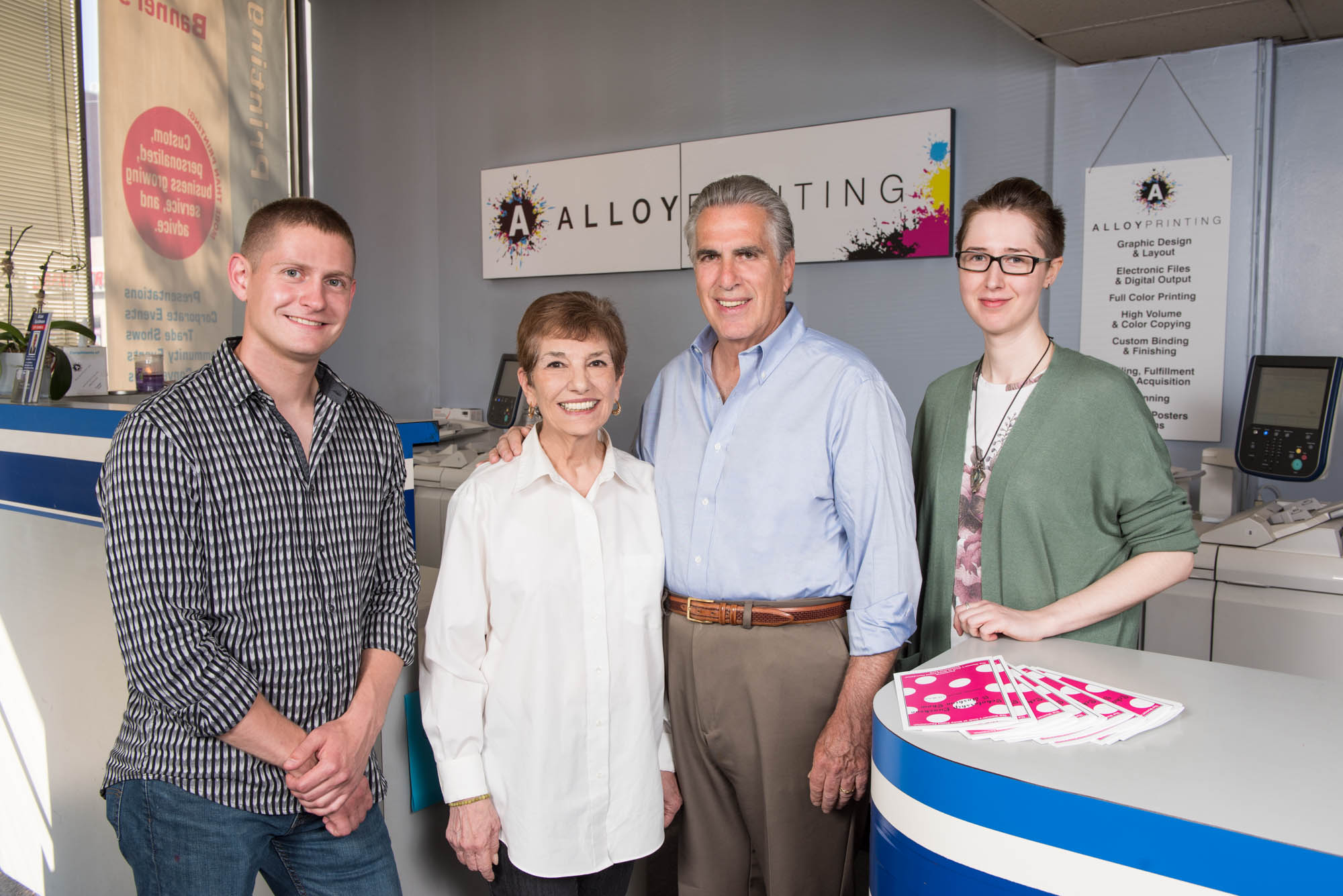Whether they know it or not, White Plains residents rarely go a day without seeing something produced by PIP Printing. The company does the printing for the City of White Plains, the White Plains Beautification Foundation and the White Plains Performing Arts Center, along with scores of other local businesses and organizations.
A staple of East Post Road since 1995, PIP Printing’s modest storefront conceals a sprawling series of rooms, spanning more than 6,000 square feet, full of printing machinery. Their goal, the Goldmans say, is to offer anyone with printing needs a range of options and level of expertise not available elsewhere.
“The internet doesn’t serve what we produce. We’re more of a hands-on, come in, sit down, let’s go over it,” Alan Goldman said. “What can we do? How can we help? How can we both work together to produce what you want and make you successful? Because if you’re successful, we’re successful.”
When the thought of entering the printing business first entered Mary Jane Goldman’s mind, she was working as a nurse in the Bronx at what is now called Montefiore Medical Center. She had worked in nursing, a field she called her “first love,” for 11 years, but had grown frustrated by the politics of the industry and thought she wasn’t getting enough out of it.
“My options were open. I was taking a sabbatical. I could always go back to nursing,” she recalled. “My parents had friends that were in [printing] and did very, very well. And I decided that would be a challenge that I would like to take on.”
In 1979, Mary Jane opened PIP Printing on Central Avenue in Yonkers. People were skeptical, she remembers, about a woman succeeding in what was then a male-dominated industry.
“Printing was a man’s world. Let’s call a spade a spade,” she said. “Everyone said, ‘A woman in printing?’ We’re talking now in the 70s.”
After seeing success at their Yonkers location, the Goldmans opened up stores in New Rochelle and Stamford, Conn. Alan, who had been working in his family’s ambulance business, joined his wife as the company’s salesman.
“I’m an outside type of guy,” Alan said. “So I’m the salesman here.”
In the mid-1990s their son, Scott, came on board to handle the finances and help them upgrade their technology.
“He was working down on Wall Street for one of the finance companies and decided the stress would probably kill him, so he decided he’d come into the family business,” Mary Jane said. “Spent a fortune the first year he was with us. I said, ‘Oh God, there goes our retirement.’ But he turned it around and made it so profitable.”
In 1995, the Goldmans decided having several locations was more trouble than it was worth.
“Sometimes more isn’t always better,” Mary Jane explained. “We said, ‘Let’s have one location.’”
White Plains residents since 1987, the Goldmans decided to set up shop minutes from their home.
“It’s the center of the county. It’s the county seat,” Alan explained. “It’s where all the action is.”
In the 17 years since, the Goldmans and their business have become ingrained in the White Plains community. Alan is on the executive board of the White Plains Business Improvement District and the Board of Trustee of the White Plains Performing Arts Center. Mary Jane is on the board of the Women’s Club of White Plains. PIP Printing, which has 10 employees, has been honored by the county executive and governor’s offices for hiring people who are mentally disabled.
When it comes to the technology of the industry, PIP Printing is constantly buying new equipment to keep up.
“Every time we buy a piece of equipment, within six months it’s usually outdated,” Mary Jane said. “If you don’t put back into your business, you’re not going to succeed and that’s one of our philosophies. We keep putting into our business so we could upgrade our equipment.”
One thing that hasn’t changed in 32 years, though, has been people’s reliance on printing, Mary Jane and Alan say. Despite much fanfare, e-mail and the internet have not made paper anything close to obsolete.
“We’re supposed to be a more paperless society,” Alan said. “But we find it’s not a paperless society.”
Photo credit: ANDREW VITELLI


